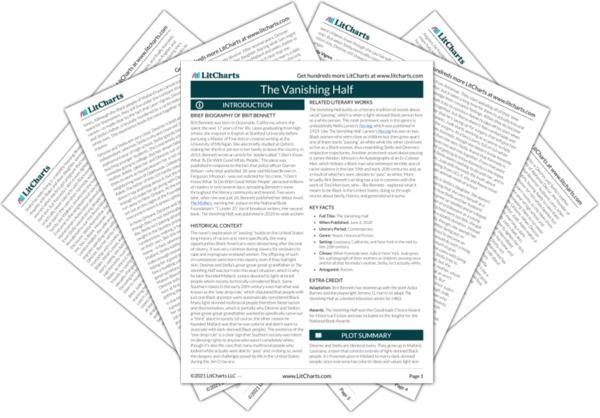Next
Summary
The Vanishing Half Study Guide |
Next
Summary
|
Welcome to the LitCharts study guide on Brit Bennett's The Vanishing Half. Created by the original team behind SparkNotes, LitCharts are the world's best literature guides.

Adaptation. Brit Bennett has teamed up with the poet Aziza Barnes and the playwright Jeremy O. Harris to adapt The Vanishing Half as a limited television series for HBO.
Awards. The Vanishing Half won the Goodreads Choice Award for Historical Fiction and was included on the longlist for the National Book Awards.